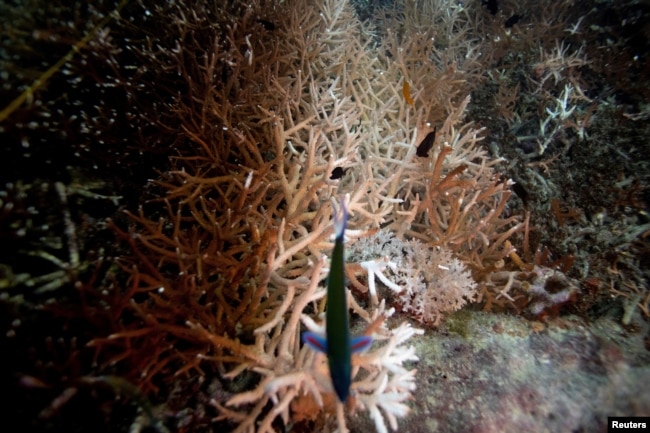Periods of very high temperatures, or heatwaves, deep in the ocean might be highly “under-reported,” a recent study says. The study suggests such heatwaves could have worrying effects in the future.
Australia’s national science agency (CSIRO) and the Chinese Academy of Sciences worked together to do the research, which appeared recently in the scientific publication Nature.
Researchers found that 80 percent of marine heatwaves below 100 meters are independent of surface events.
CSIRO scientist Ming Feng said, “These findings deepen our understanding of the frequency and intensity of extreme temperature events under the ocean surface and possible implications.”
Marine heatwaves are temperature events that can cause severe damage to marine living environments. Such effects include damage to coral reefs and species displacement, the study said.
These heatwave events are becoming more common due to global warming, causing major environmental and socioeconomic effects, the study suggested.
The majority of previous studies on marine heatwaves have depended on surface signals based on widely available satellite observations of sea-surface temperature.

For this study, researchers used data from eight mooring sites. These locations permit a direct estimate of the occurrence of ocean temperature extremes.
The study also used observational data from more than two million ocean temperature profiles from global oceans.
The finding of separate, deeper warming was particularly worrying, the research found. Such warming is of concern because it affects the living area, or habitat, of so many creatures and the food they eat.
“Extreme temperature events below the sea surface are of greater ecological concern because they affect the habitat of most marine primary producers and consumers,” the study said.
The research also highlighted the effects of ocean currents on marine heatwaves, in particular eddies.
Eddies are circular currents of water that are likely a major driver of subsurface events, CSIRO suggested.
Ocean eddies can affect acidity levels, oxygen levels and nutrient concentrations in the ocean.
The study suggested that understanding the drivers of subsurface marine heatwaves can help to improve assessment of these events in a warming climate and help to predict them in the future.
I’m John Russell.
Farah Master reported on this story for Reuters. John Russell adapted it for VOA Learning English.
_______________________________________________
Words in This Story
frequency – n. the number of repetitions of a periodic process in a unit of time
intensity – n. the magnitude of a quantity (such as force or energy) per unit (as of area, charge, mass, or time)
implication — n. a possible significance
species – n. a class of individuals having common attributes and designated by a common name
mooring – n. a place where or an object to which something (such as a craft or measuring device) can be fixed in place (or moored)
